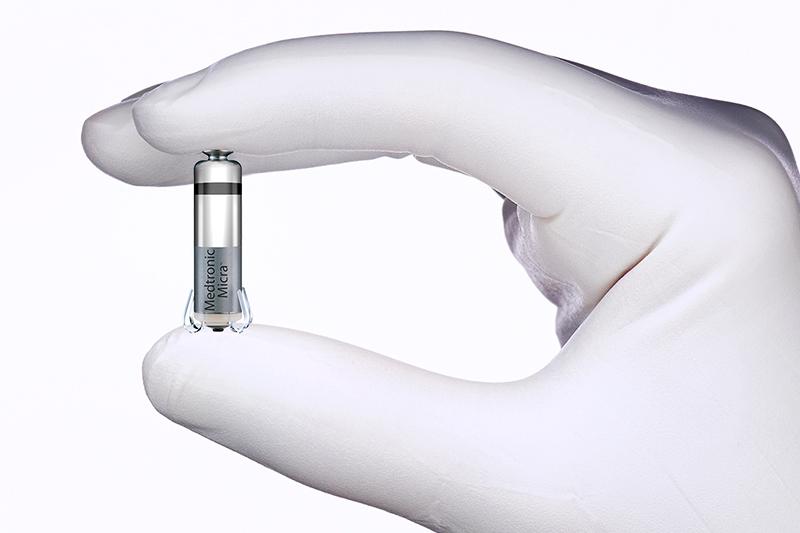Small, wireless pacemaker reduces risks for cardiac patients
Heart patients living with bradycardia can now take advantage of the smallest pacemaker available for them: the Micra Transcatheter Pacing System (TPS). Tulane Medical Center is one of the first hospitals in Greater New Orleans to offer TPS.
This new pacemaker, about the size of a large vitamin, provides patients with advanced pacing technology at one-tenth the size of a traditional pacemaker.
Also unlike traditional pacemakers, the Micra TPS does not require cardiac wires (leads) or a surgical “pocket” under the skin. The device is small enough to be delivered through a catheter and is implanted directly into the heart with small tines, without the complications associated with leads. The Micra TPS automatically adjusts its pacing therapy to a patient’s activity levels. It is also cosmetically invisible.
“This wireless pacemaker can be implanted through a minimally invasive procedure ... The patient can usually go home the same day.”
Colleen Johnson, MD
Colleen Johnson, MD, assistant professor in the Tulane University School of Medicine and a cardiac electrophysiologist with the Tulane University Heart & Vascular Institute, recently performed the first procedure at Tulane Medical Center.
“This wireless pacemaker can be implanted through a minimally invasive procedure where the tiny device is inserted into a blood vessel in the leg and affixed in the heart,” Johnson said. “The patient can usually go home the same day. This small pacemaker reduces the need for surgery, long hospital stays and complications that can occur from traditional pacemakers with wires and leads.”
Bradycardia is a condition characterized by a slow or irregular heart rhythm, usually fewer than 60 beats per minute. At this rate, the heart is unable to pump enough oxygen-rich blood to the body during normal activity or exercise, causing dizziness, fatigue, shortness of breath or fainting spells. Pacemakers are commonly used to treat bradycardia: They send electrical impulses to the heart to increase heart rate, which restores the heart's normal rhythm and relieves symptoms.
“As physicians, we want to provide patients the best possible treatments with the least amount of risks and complications,” Johnson said. “Using a wireless pacemaker is just one example of Tulane’s commitment to providing cardiology patients with the latest and most advanced treatments.”


